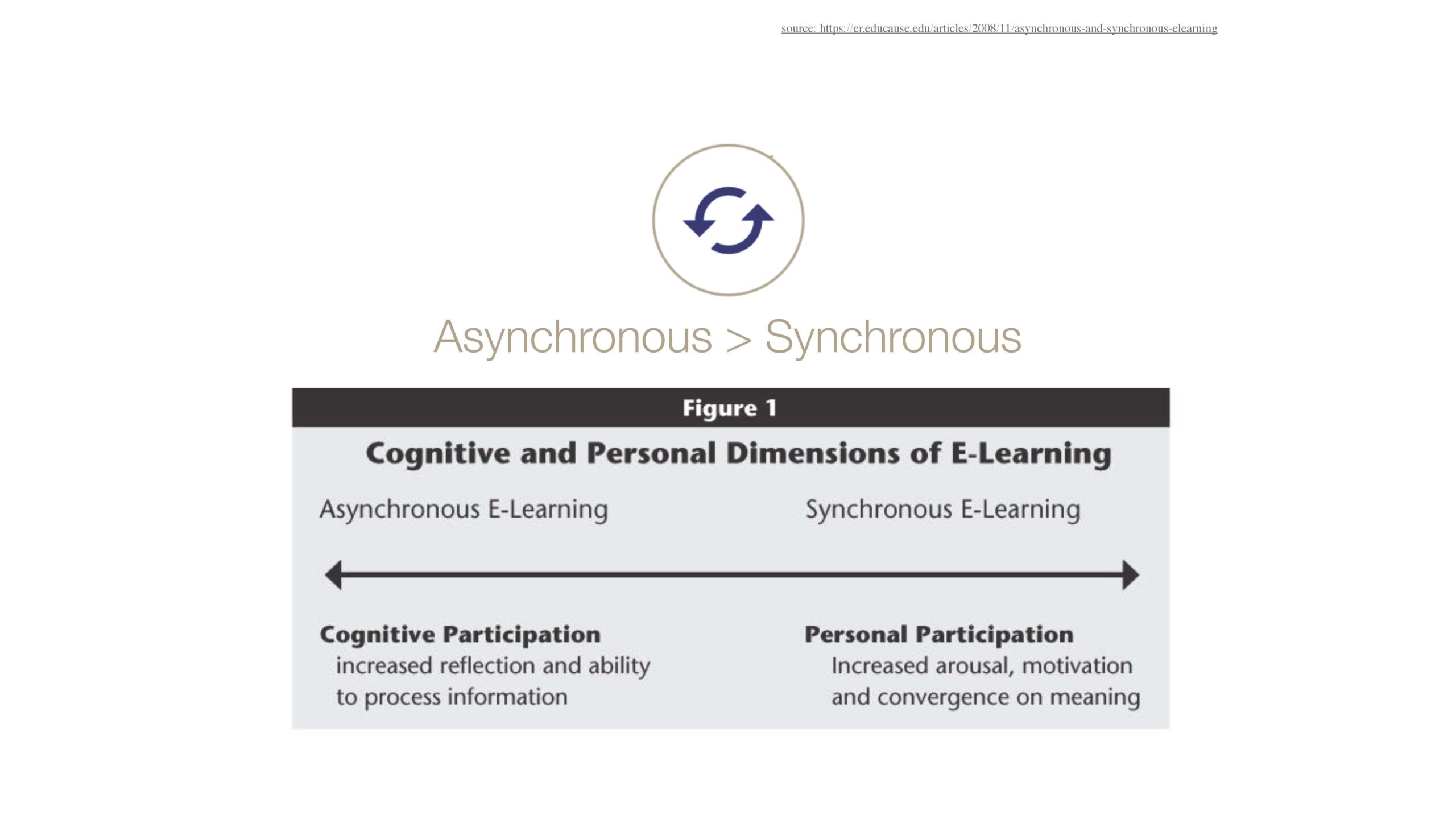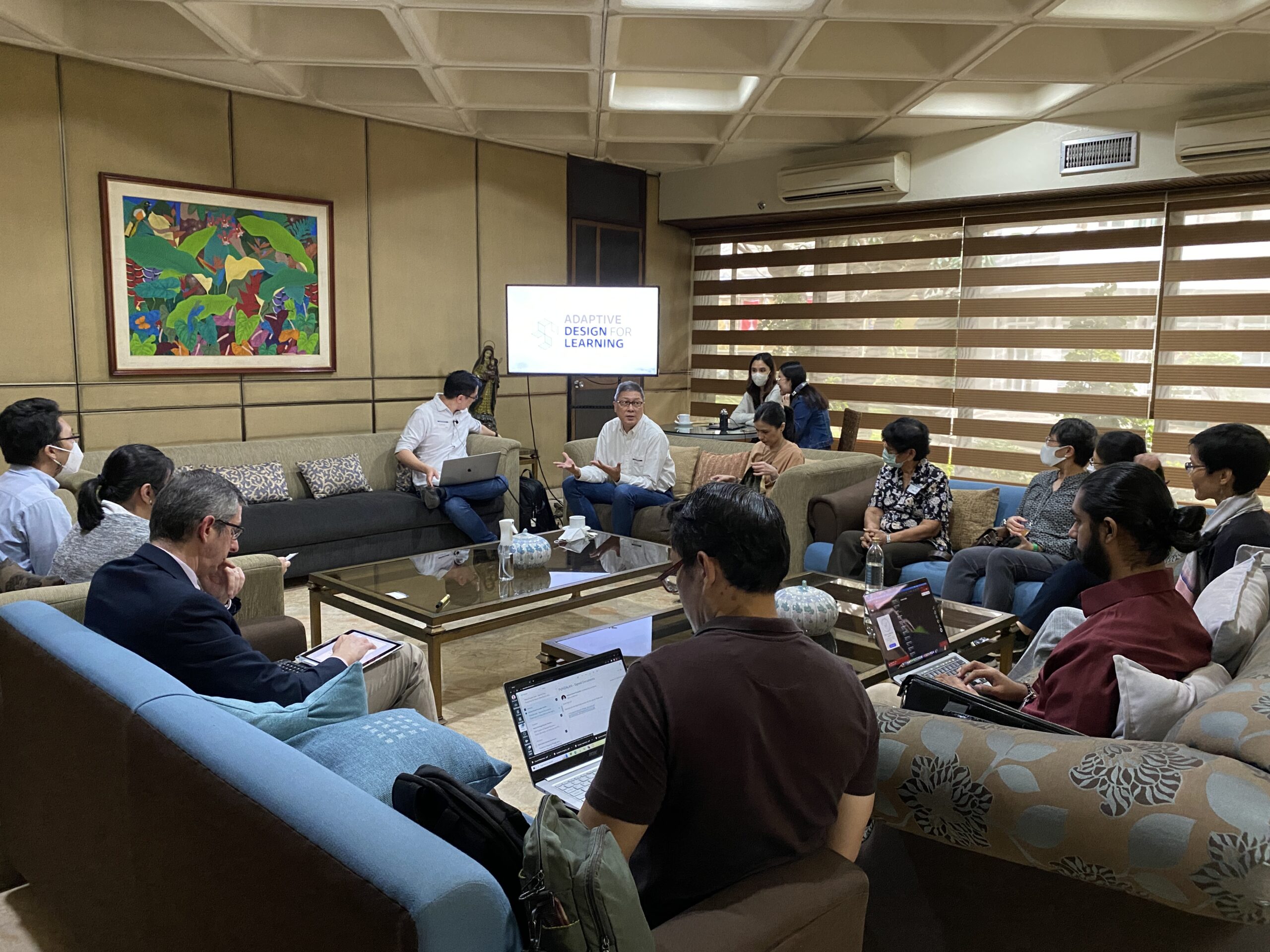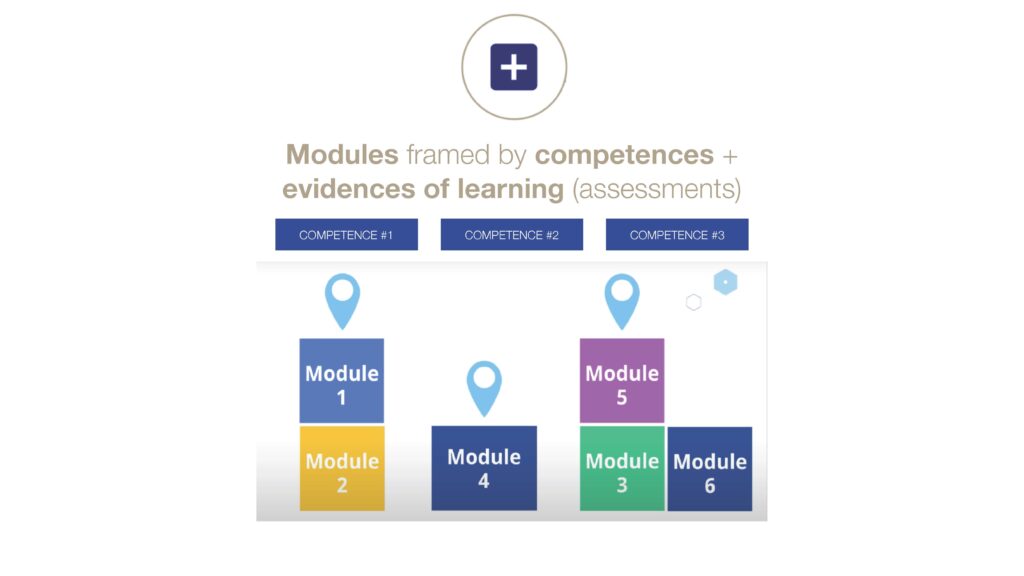
The CTL held its second Learning Lounge on January 18, 2023 with special guest Galvin Ngo, an instructor at School of Education and Learning Design and the director at the Ateneo Institute for the Science and Art of Learning and Teaching (SALT). He shared with us SALT’s Adaptive Design for Learning (ADL) Framework, which has 5 principles: Adaptability, Modularity, Asynchronous > Synchronous, The 3Cs of Online Learning, and Active & Interactive Learning. Hear all about it below:
Here are our major takeaways from the Learning Lounge:
Flipped Classroom
During the pandemic, some professors discovered the joys of the flipped classroom. A flipped classroom reverses the traditional set-up of class lectures being students’ first contact with the material. Instead, students are given asynchronous work, such as reading or watching a video, that introduces them to the topic before a synchronous class with their professor and classmates. The time that students and the professor spend together can then be used in more interactive ways, such as class discussions and group activities, or to discuss more difficult topics that build on the material they have already absorbed.
Galvin shared this model, which proposes that asynchronous learning should focus on cognitive participation – for example, activities that foster reflection. On the other hand, synchronous learning should focus on personal participation, which is why activities that involve discussion and interaction are highly encouraged.

Some questions you may want to ask yourself in coming up with activities for a flipped classroom include:
- What can my students do by themselves?
- What might they have difficulty doing without my guidance?
- What might they absorb better if they can interact with their peers?
Now that we are moving into a blended learning set-up, the flipped classroom still remains relevant, as we determine what can be left to online classes and asynchronous work, and what can be done during face to face classroom sessions.
Add Value to F2F Classes
One of the participants, Ms. Danes Mejos, shared that at the end of her F2F classes, she asks her students “sulit ba yung pagpasok niyo?” This is such a great question (and a great exit ticket too!). Now that we’re operating in a post-pandemic classroom, we need to make sure that when students travel all the way to get to campus, it’ll be worth it. So how can we add value to our in-person classes?
- Think about activities that lend themselves better to live interaction. This could be collaborative group works, class discussions and debates, and question and clarification sessions. Sir Rosh Uttamchandani, another Learning Lounge participant, shared how he brought value to his onsite classes by allotting time for students to work on their group projects. He noticed his students work much faster and more effectively on their group projects when they are physically together. He also brought value to his onsite classes by inviting industry professionals to interact with his students and give feedback on their work in preparation for their final presentations.
- Take note of the features you liked in your online classes and find a way to bring them into your onsite classes. For instance, a number of participants mentioned how they enjoyed the “Chat” feature in online classes. This helps them listen to more than one student’s questions and insights at one time and it also helps shyer students speak up. To recreate this in a physical classroom, we recommend using the Canvas Live Chat tool. Students can open their laptops or phones, open the Canvas Course of your class, hop onto the Live Chat feature and start chatting. Teachers can then flash the chat on the board and leave it up there for the duration of the class.

Shift from Whole Course Design to Modular Design
Modularity is one part of the ADL Framework. Sir Galvin shared how, traditionally, teachers would save all their major assessments for last, so students would only develop the intended competencies or intended learning outcomes (ILOs) by the end of the course. One practice that Ateneo SALT encourages is to have competencies/ILOs divided into the different modules of a course.

The image above shows that Competence #1 can be gained in Modules 1 and 2, Competence #2 can be gained in Module 4, and so on. By using a Modular Design, you can say “If students finished Module 4, then they should have Competency #2 (and Competency #1).” This is different from a Whole Course Design, wherein students will only have Competencies/ILOs 1 to 3 at the end of Module 6.
We should also help students understand how the modules build on each other so they know the direction of the learning experience and they can take control of their learning as well!
Fostering self-directed learning
One of the questions that came up during the session was – How do we gauge students’ maturity and capability for self-directed learning, and take these into account when creating modules and activities? The consensus? Unfortunately, most students are not skilled self-directed learners.
Galvin shared some suggestions that he uses in his own classes that can help students build this skill:
- Give advance notice. Galvin makes sure to inform students whether a module or activity he asks them to complete is crucial to either their next lecture, or for future modules. This allows them to better understand the importance of completing the assessments on time.
- Fluid deadlines. This is not a new concept here at UA&P – during the pandemic, professors were encouraged to be lenient with deadlines and allow students to submit work past the due date. What Galvin does in his classes is this: he sets due dates, but informs students that if they need an extension, it will be given to them. So far, students have not taken advantage of this policy. Sir Dean Mejos does something similar in their classes – he sets a deadline for their assignments, but their availability dates goes on until a few days after (e.g., Due date is on January 1, but the Assignment will be available and open for submissions until January 7). Whether or not a professor chooses to give deductions for late submissions is up to them, but Galvin recommends considering the purpose of the assessment. Is it to prepare them for a lecture or activity, so not submitting it on time negatively impacts their capability to contribute in class? Or is it a summative assessment that aims to check how much they’ve learned? In Galvin’s case, the former merits deductions, while he usually lets the latter pass without any deductions. For summative assessments, especially, Galvin’s POV is that it is usually better to have students submit overdue work that they were able to think more deeply about, versus submitting crammed work just to meet a deadline.
- Offer resubmissions. This can be tricky – as a professor, it is also important to consider whether or not you will be able to manage checking resubmissions alongside the regular flow of work. But Galvin has noticed that almost every time, if he gives feedback and offers resubmission, students take the opportunity and greatly improve their output. Allowing students this chance to improve – to take control of their learning – and then rewarding their initiative, is a great way to foster self-directed learning.
Professors shared some of their unique classroom practices during the session. After a more in-depth discussion with them, we’ve added some design patterns to our library! Be sure to check them out!
- Sir Galvin’s Deck
- Canvas Live Chat Tech Tool Kit – bring the Chat Feature into your onsite classes
- On the spot surveys – an activity for onsite class that will get students out of the classroom
- Radio Show Lesson – a new way to deliver online synchronous sessions